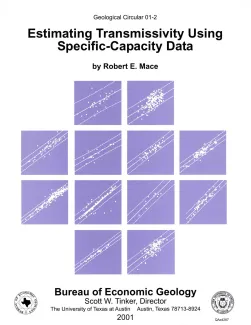
Publication Details
Get the Publication
$11.00
Abstract/Description:
Because specific-capacity data are useful for estimating transmissivity, they should be used whenever possible in hydrogeologic studies. Including specific-capacity data will increase the number of transmissivity estimates in aquifers, sometimes dramatically, allowing more accurate statistical and spatial descriptions of transmissivity and hydraulic conductivity. Three main approaches are used in estimating transmissivity from specific capacity data: analytical, empirical, and geostatistical. The most commonly used analytical approach is an equation derived from the Theis nonequilibrium formula, which requires corrections for well loss, vertical flow due to partial penetration, and reduced saturated thickness. The empirical approach involves empirically relating transmissivity to specific capacity measured in the same well. This approach commonly requires at least 25 data pairs but does not require a correction for turbulent well loss or vertical flow resulting from partial penetration. Geostatistical techniques are useful for estimating transmissivity from specific capacity, developing interpolated maps of transmissivity, and quantifying the estimation uncertainty. Geostatistical techniques are, however, mathematically complicated and require a substantial number of data to define semivariograms and cross-semivariograms. Techniques for estimating transmissivity from specific-capacity data have been successfully applied in many aquifers in Texas and elsewhere to provide valuable information for inputting to numerical models and for evaluating water resources.